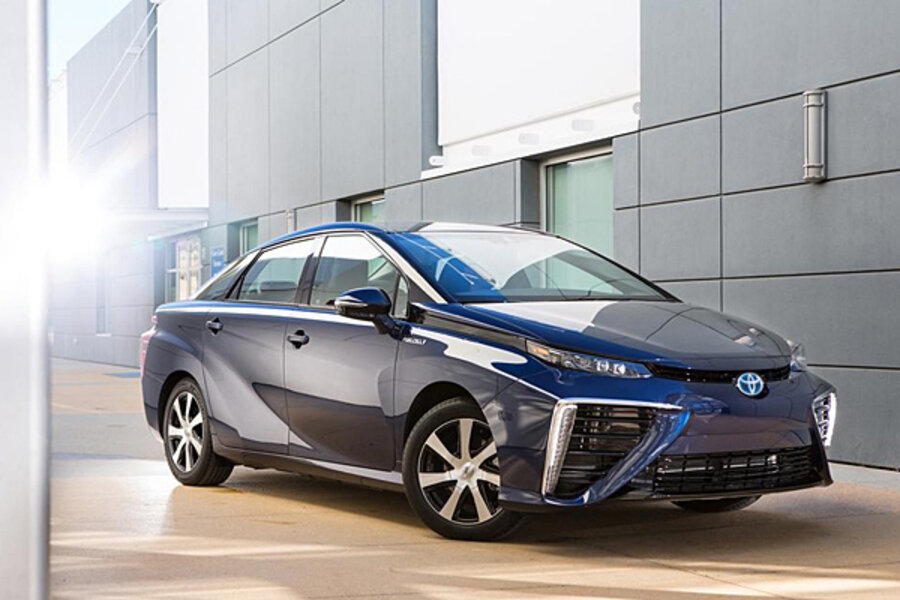Sporty, hydrogen-fueled Toyota Mirai emits water, not CO2
Loading...
Toyota has been an innovator in hybrid technologies. The Toyota Prius is the best-selling hybrid of all time. Now, Toyota wants to release something even better.
On Thursday, Toyota debuted the 2016 Toyota Mirai, the company's first fuel-cell car. The Mirai, whose name means "future" in Japanese, gets 300 miles on a full tank. Toyota claims the fuel tank, which is reinforced with Kevlar, takes five minutes to fill. The car's fuel-cells convert hydrogen to electricity. The car's only emission is water vapor.
"Today, we are at a turning point in automotive history," Akio Toyoda, the company's president, said in a video. "A turning point that represents many years and countless hours of work by our team to create a car that redefines the industry. All of us at Toyota believe in a future that will be safer, greener and easier for everyone."
Toyota's major hurdle will be to build enough hydrogen stations to make the car a realistic purchase. Currently, there are only 13 hydrogen stations in the US, according to the US Department of Energy.
So Toyota needs to help build more hydrogen stations. Toyota is working with French energy giant Air Liquide to create 12 hydrogen stations in New York, New Jersey, Massachusetts, Connecticut, and Rhode Island. Toyota hopes that New York and Boston will serve as the main hydrogen hubs in the region. In May, Toyota loaned $7.3 million to FirstElement Fuels to support 19 hydrogen fueling stations around California.
“Toyota’s vision of a hydrogen society is not just about building a great car, but ensuring accessible, reliable, and convenient refueling for our customers,” said Jim Lentz, chief executive offier of Toyota North America. “I am happy to announce that this vision will expand beyond the borders of California and give customers the opportunity to join the fuel cell movement.”
Fuel-cell cars are nothing new. Honda's FCX Clarity, released in 2002, was the first fuel-cell car. But the car never caught on, and only a handful have been leased in the past few years, according to Fortune. Hyundai has been leasing versions of its fuel-cell Tucson SUV in Southern California.
But unlike the stockier Clarity and Prius, the Mirai is sporty. The vehicle has a low center of gravity, and the company claims it has "dynamic handling." Mr. Toyoda said he doesn't want the Mirai just to be an environmentally friendly car, he wants it to be "a pleasure to drive."
Toyota didn't release many details about the car, but more is sure to come out at the upcoming Los Angeles Auto Show. The car will be available in the US by early 2016.
"We believe that behind the wheel of the Mirai, we can go places we have never been, to a world that is better, in a car that is better," Toyoda said. "For us, this isn’t just another car. This is an opportunity – an opportunity to really make a difference. And making a difference is what Toyota is all about."






